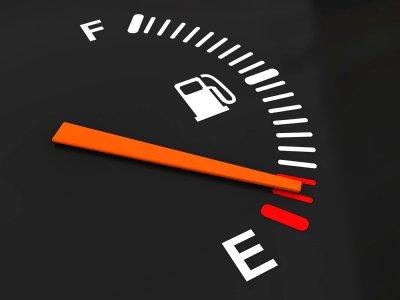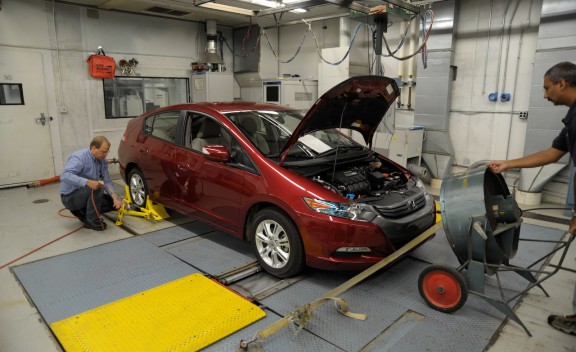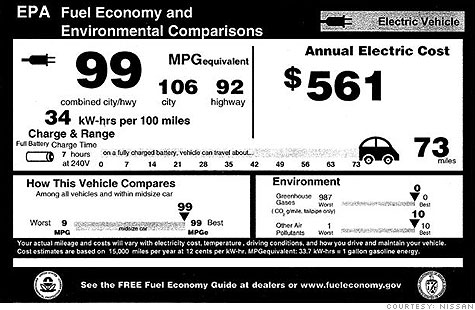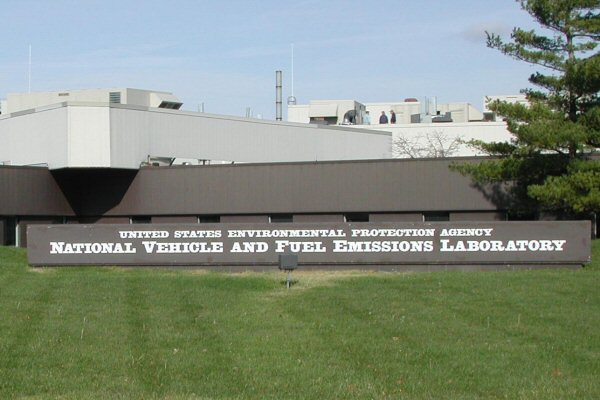We all know that the official fuel consumption figures indicated by carmakers around the world are difficult, if not impossible, to reach in real-world conditions. Many have tried, nobody has managed to record at least the same figures as the ones provided by the manufacturer.
Of course, the question still remains: why are they still providing us with these figures if none of them is achievable in real life? But the whole topic is a lot more complicated.
Before jumping into details, there are a couple of things to be clarified. What's the difference between fuel consumption and fuel economy? Although some people believe they have the same meaning, they don't. Fuel consumption refers to the amount of fuel burned by the car per unit distance, while fuel economy is the distance a vehicle travelers per unit of fuel. Hence the differences between US and European units - while Americans use miles per gallon to measure fuel economy, Europeans are commonly known for adopting the l/100km syntax, with the latter being specifically meant to measure fuel consumption.
So why is the difference between official and real figures so big? Well, mostly because the real-time conditions are very different from the ones in testers' paradise. And when we say paradise, we really mean it.
The official fuel consumption figures are obtained following tests that might differ a little bit but, in essence, they are based on the same steps.
Before starting the test, there are a number of requirements to be met by the vehicle. First of all, it must have been driven for a specific number of kilometers (some say the fuel consumption is improved by 8 percent after 3000 kilometers) to be sure the engine has reached its optimum condition. The laboratories that are hosting the tests are real state-of-the-art facilities supposed to replicate the real world but... they are going far beyond what a driver would see on the street while driving.
For example, the tests are conducted at temperatures between 20 degrees Celsius and 30 degrees Celsius on rolling roads that allow the drivers to reach whatever speed they want.
The way the urban and the highway tests are conducted are slightly different. To get the urban cycle, the engineers are using a cold start after the engine hasn't been used for several hours. There are multiple processes to be conducted here, including accelerations, steady speeds, decelerating and idling, just like a driver would do when driving in a city. The curious thing is that the maximum speed is usually limited to very low values, such as 50 km/h (31 mph), while the average speed goes around 19 km/h (12 mph). The distance the car covers in urban tests is also very limited, sometimes barely exceeding 4 or 5 kilometers.
The extra-urban cycle is different because it is started just after the engineers finalize the city testing, but also because the maximum speed is higher, sometimes reaching 120 km/h (75 mph), while the average speed goes around 63 km/h (39 mph). The covered distance remains limited however, with some testers doing only 7 kilometers (4.3 miles).
Such a test usually takes up to twenty minutes, but the drivers must be extremely precise because they follow a very strict procedure in which they must not exceed the allowed speed. Otherwise, they must restart the test, which isn't exactly a pleasant thing.
The interesting bit is that the resulted figures could vary more than expected, mostly because the acceleration procedure is the same in all cases, regardless if we're talking about supercars or Tata Nano. For example, the 0 to 100 km/h (62 mph) acceleration could take up to 50 seconds to determine the fuel consumption figures for each model.
There are some special conditions where factors that could influence fuel consumption are also brought into play. EPA for example introduced a new quick acceleration test that took 10 minutes, reached a maximum speed of 130 km/h (80 mph) with an average speed of 77 km/h (48 mph) and covered a total distance of 13 kilometers (8 miles). There are a total of four stops, but no other car function, such as air conditioning, is activated.
A separate test that involves the climate control and a higher temperature - up to 35 degrees Celsius - is also applied. This time, the maximum speed is 88.2 km/h (54.8 miles) with an average of 35 km/h (22 mph) and takes up to 9.9 minutes.
Of course, none of these conditions actually exist in real life, so this is how the differences between the official figures and the ones recorded by drivers are taking shape. The saddest thing is that most vehicles are prone to at least a 25 percent increase over the official fuel consumption figures, while others could even double the numbers indicated by the carmaker.
There's not much to do in this case, other than try the numerous fuel saving tips available across the web. Or, in just a few words, you can try to replicate the conditions testing organizations are setting up in their laboratories, so you should probably drive on an empty stomach (to be sure the weight is not too big), with an empty trunk without hard acceleration and feathering the pedal as much as possible.
Of course, the question still remains: why are they still providing us with these figures if none of them is achievable in real life? But the whole topic is a lot more complicated.
Before jumping into details, there are a couple of things to be clarified. What's the difference between fuel consumption and fuel economy? Although some people believe they have the same meaning, they don't. Fuel consumption refers to the amount of fuel burned by the car per unit distance, while fuel economy is the distance a vehicle travelers per unit of fuel. Hence the differences between US and European units - while Americans use miles per gallon to measure fuel economy, Europeans are commonly known for adopting the l/100km syntax, with the latter being specifically meant to measure fuel consumption.
So why is the difference between official and real figures so big? Well, mostly because the real-time conditions are very different from the ones in testers' paradise. And when we say paradise, we really mean it.
The official fuel consumption figures are obtained following tests that might differ a little bit but, in essence, they are based on the same steps.
Before starting the test, there are a number of requirements to be met by the vehicle. First of all, it must have been driven for a specific number of kilometers (some say the fuel consumption is improved by 8 percent after 3000 kilometers) to be sure the engine has reached its optimum condition. The laboratories that are hosting the tests are real state-of-the-art facilities supposed to replicate the real world but... they are going far beyond what a driver would see on the street while driving.
For example, the tests are conducted at temperatures between 20 degrees Celsius and 30 degrees Celsius on rolling roads that allow the drivers to reach whatever speed they want.
The way the urban and the highway tests are conducted are slightly different. To get the urban cycle, the engineers are using a cold start after the engine hasn't been used for several hours. There are multiple processes to be conducted here, including accelerations, steady speeds, decelerating and idling, just like a driver would do when driving in a city. The curious thing is that the maximum speed is usually limited to very low values, such as 50 km/h (31 mph), while the average speed goes around 19 km/h (12 mph). The distance the car covers in urban tests is also very limited, sometimes barely exceeding 4 or 5 kilometers.
The extra-urban cycle is different because it is started just after the engineers finalize the city testing, but also because the maximum speed is higher, sometimes reaching 120 km/h (75 mph), while the average speed goes around 63 km/h (39 mph). The covered distance remains limited however, with some testers doing only 7 kilometers (4.3 miles).
Such a test usually takes up to twenty minutes, but the drivers must be extremely precise because they follow a very strict procedure in which they must not exceed the allowed speed. Otherwise, they must restart the test, which isn't exactly a pleasant thing.
The interesting bit is that the resulted figures could vary more than expected, mostly because the acceleration procedure is the same in all cases, regardless if we're talking about supercars or Tata Nano. For example, the 0 to 100 km/h (62 mph) acceleration could take up to 50 seconds to determine the fuel consumption figures for each model.
There are some special conditions where factors that could influence fuel consumption are also brought into play. EPA for example introduced a new quick acceleration test that took 10 minutes, reached a maximum speed of 130 km/h (80 mph) with an average speed of 77 km/h (48 mph) and covered a total distance of 13 kilometers (8 miles). There are a total of four stops, but no other car function, such as air conditioning, is activated.
A separate test that involves the climate control and a higher temperature - up to 35 degrees Celsius - is also applied. This time, the maximum speed is 88.2 km/h (54.8 miles) with an average of 35 km/h (22 mph) and takes up to 9.9 minutes.
Of course, none of these conditions actually exist in real life, so this is how the differences between the official figures and the ones recorded by drivers are taking shape. The saddest thing is that most vehicles are prone to at least a 25 percent increase over the official fuel consumption figures, while others could even double the numbers indicated by the carmaker.
There's not much to do in this case, other than try the numerous fuel saving tips available across the web. Or, in just a few words, you can try to replicate the conditions testing organizations are setting up in their laboratories, so you should probably drive on an empty stomach (to be sure the weight is not too big), with an empty trunk without hard acceleration and feathering the pedal as much as possible.




